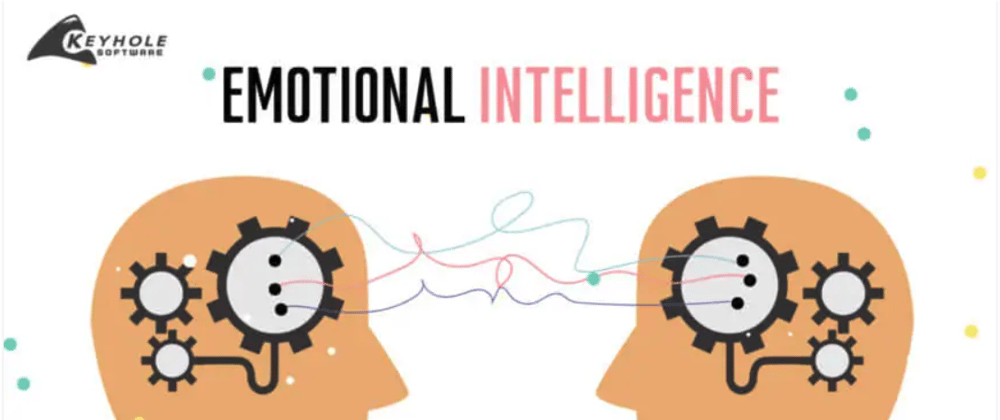Effective communication has always been hard. More than just the words being said, it's the tone, the audience, the media, and the timing. While these have always been important parts of communication, today’s work environment has added additional stressors.
Emotional Intelligence Is Needed Now More Than Ever
As software developers in 100% remote work environments, we now have additional challenges stemming from the loss of face-to-face communication. In many situations, this can lead to harmful trends in coworker interactions—less job satisfaction, co-worker interactions, and overall team success. One way to combat this negative side effect of remote work is to increase Emotional Intelligence as an individual software developer.
In this blog, we discuss how interactions between software developers are affected by Emotional Intelligence (EQ). In addition to the basic components of EQ, we discuss suggestions for improving Emotional Intelligence in common interactions experienced by software developers.
Note: Don't miss our other blogs with additional tips and tricks for effective remote teams including tips for distributed teams in The Remote Development Experience, and Working Remotely As An Agile Dev Team: Tips & Suggestions.
Definition of Emotional Intelligence
In a nutshell, Emotional Intelligence (EQ) is a set of personal social skills connected to attitude and approach. They collectively establish how well we perceive and express ourselves, create and maintain social relationships, cope with challenges, and use emotional information in a meaningful way.
Psychology Today describes it as "the ability to identify and manage one’s own emotions, as well as the emotions of others." So as an example, when a co-worker expressed thoughts or feelings, Emotional Intelligence is our response —how we perceive that emotion, integrate it into our thought processes, attempt to understand, and regulate/adapt responses for the optimal outcome.
Emotional Intelligence provides fundamental competence for getting along in the workplace. While EQ used to be a niche subject compartmentalized within certain psychology clinical avenues, this "soft skill" is a learned aptitude that can have a major influence on behavior, work quality, and the ability to work as a team.
And as software developers rarely work in a solo vacuum, it is imperative that we be able to work effectively in a team. Additionally, as software consultants, we must hold high levels of emotional intelligence to effectively provide exemplary customer service to our clients' teams.
Elevating your Emotional Intelligence is an effective tool in keeping a healthy and engaging remote work environment.
Emotional Intelligence Components
HR Zone names the four basic components of Emotional Intelligence, which are needed to help the Scrum Master and developer alter the course of emotions and behavior. Depending on the reference, there are a number of other components, but these are the ones that describe it best. I’m not going to split strings into similarities and differences.
1. Self-Awareness
Self-awareness means being aware of what you are feeling and being conscious of the emotions within yourself. This is considered the foundation for all the other components of Emotional Intelligence.
2. Self-Management of Emotions
Operationally it means that team members need to be able to balance their own moods so that worry, anxiety, fear, or anger do not get in the way of what needs to be done.
Those who can manage their emotions generally perform better because they are able to think clearly. This does not mean suppressing or denying emotions, but understanding them and using that understanding to deal with situations productively. Team members should first recognize a mood or feeling, think about what it means and how it affects them, and then choose how to act.
3. Social Awareness
Being socially aware means that you understand how to react to different social situations, and effectively modify your interactions with other people so that you can achieve the best results. It also means being aware of the world around you and how different environments influence people.
4. Relationship Management
The final component of Emotional Intelligence is the ability to connect with others, build positive relationships, respond to the emotions of others, and influence others on the team.
Emotional Intelligence Example: Pre-COVID-19 And Now
Emotional Intelligence is needed by every single person in an organization. That said, I've found that it is more noticeable (whether positively or negatively) in relationships where requests for action are frequently asked.
Here’s a fairly innocent scenario that requires Emotional Intelligence in order to change how one coworker communicates with another.
Pre-COVID-19:
- When working in the office, a Scrum Master would frequently run into a developer team member at the coffee maker. While waiting for coffee, they would talk about how great the coffee is, the weekend, and their crazy pets.
- Sitting at the desk, the developer would frequently get reminders via spoken and chat messages to put tasks on the user stories and make other scrum board changes.
Now:
- Now, while only working from home, the developer only receives requests by chat messages for updates—without the casual conversation in between requests.
- The Scrum Master is expecting the developer to quickly reply.
- After a few weeks, the Scrum Master is starting to receive snarky comments for some of the requests.
Emotional Intelligence needs to be applied in this situation…. and by both parties.
Taking the Right Course of Action
Using these Emotional Intelligence Components in our scenario above, there are several courses of action that can be taken to remediate the situation. Being remote makes the challenge much more difficult. Deciding how to apply Emotional Intelligence can be alleviated by using the following tips.
1. Know your audience and dialog
Take inventory of the in-office history of your interactions with individuals and work to keep your remote-only dialog consistent with that. If casual conversation, mixed in with frequent requests, are part of your relationship history, then it is important to try to keep that going.
For example, break up consecutive requests with a question about their pets, family, or hobby. Lead in with that question or ask about their weekend without making a request for action. Be aware of your recent dialog to prevent a harmful trend from forming.
2. Use the right communication channels
Chat apps like Teams and Slack are handy communication tools that provide instant visual cues that messages have been read. People usually reply to chat messages very quickly. They provide the instant gratification that emails and comments on the digital user story don’t provide. Like anything else, chat apps are easily abused. It is easy to always use chat for all communications. Chat communications tend to be short and less thought out. I, for one, am good at choosing the wrong words when what I want to say is not thought out. Quick replies are easily influenced by emotions.
Short, text-only communication is easier to misinterpret. Some jokes using only text can sound rude. They need a facial expression to help carry the intent. Other short messages can sound demanding. A single message of “add hours to your task” can come across as demanding, for example.
For emotionally sensitive topics, a phone or video call may be the appropriate channel. It is easier to show empathy and to show they have your full attention with a video call. The caveat of this is not to use phone or video for only sensitive messages. Use the video feed once in a while for casual topics to show there is a human on the other side.
3. Remember personal relationships are still important
The first two tips feed into this one. Personal relationships are important in a professional and corporate environment regardless if you are in-office or remote. For some people, this requires a lot more effort in a remote setting. After a period of time, it is easy to feel disconnected or lost from the other coworkers. Going from many human interactions to a few times a day can feel alienating.
Check-in on the coworkers you haven’t heard from for a while. See how they are doing. Empathize with others and show that personal relationships are still important. Show some grace when a chat message could be interpreted as rude. Chances are that rudeness wasn’t the intent and it isn’t worth a message to sour a relationship.
Fostering and building upon relationships allows you to anticipate problems before they happen. Taking the time to communicate and being alert to the behavioral micro-signals might indicate a challenge to be tackled, support to be offered, or a change of approach to be considered. Emotional intelligence allows for a sort of emotional benchmarking, gauging how your colleagues are feeling and identifying future talents or needs.
Wrap Up
Not having the physical element assisting with communication requires a higher level of Emotional Intelligence in today’s remote environment. Without the help provided by verbal and non-verbal cues (such as voice tone and folded arms), social awareness is much more difficult.
That said, Emotional Intelligence is not a trait that people are born with, and it is never too late to learn.
I encourage all software developers to take the time to incorporate the components of Emotional Intelligence in daily communications to elevate their Emotional Intelligence. A higher Emotional Intelligence will allow people to effectively use the communication tools available to keep a healthy and engaged workforce.
Emotional Intelligence is more important now than it has ever been.







Oldest comments (0)